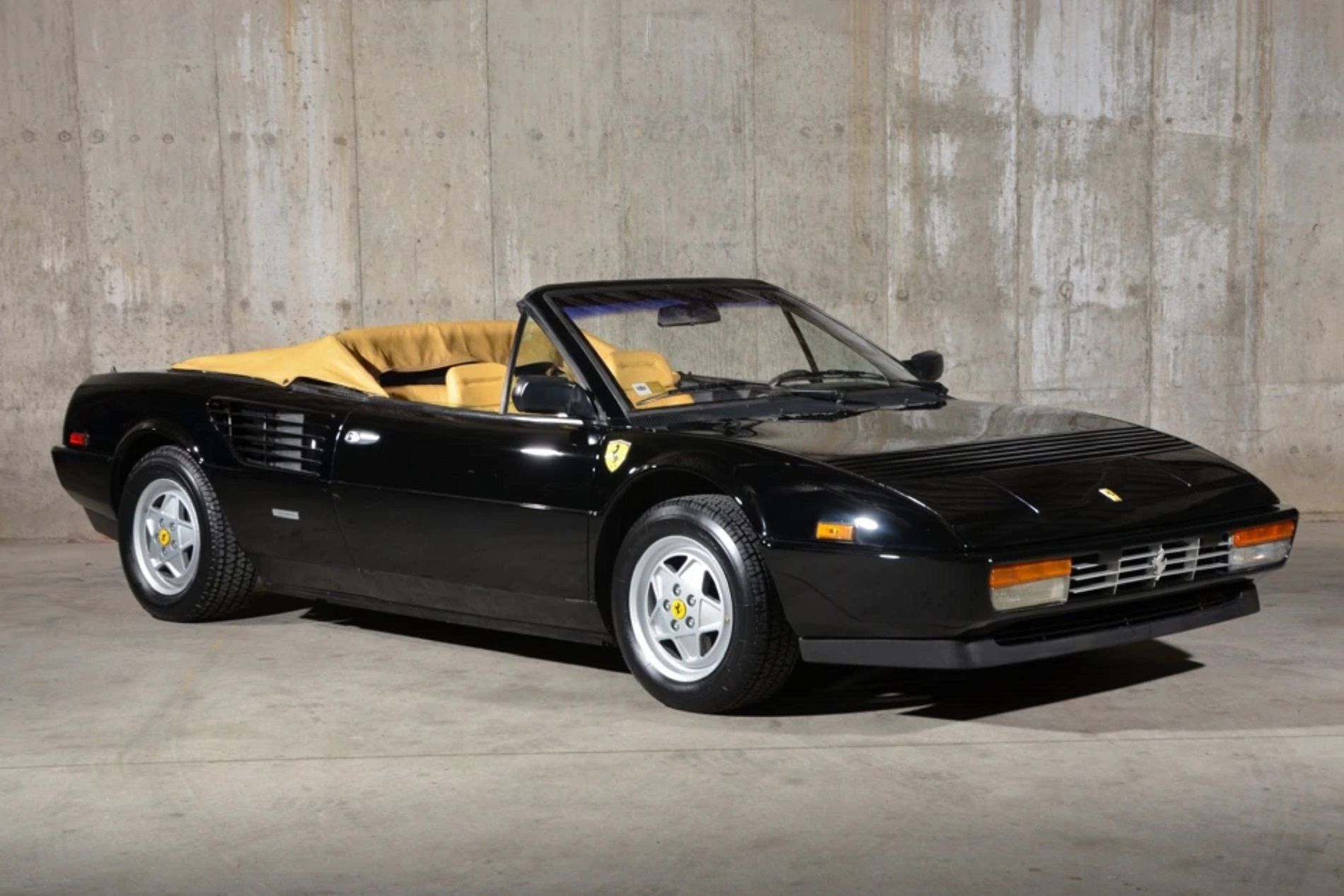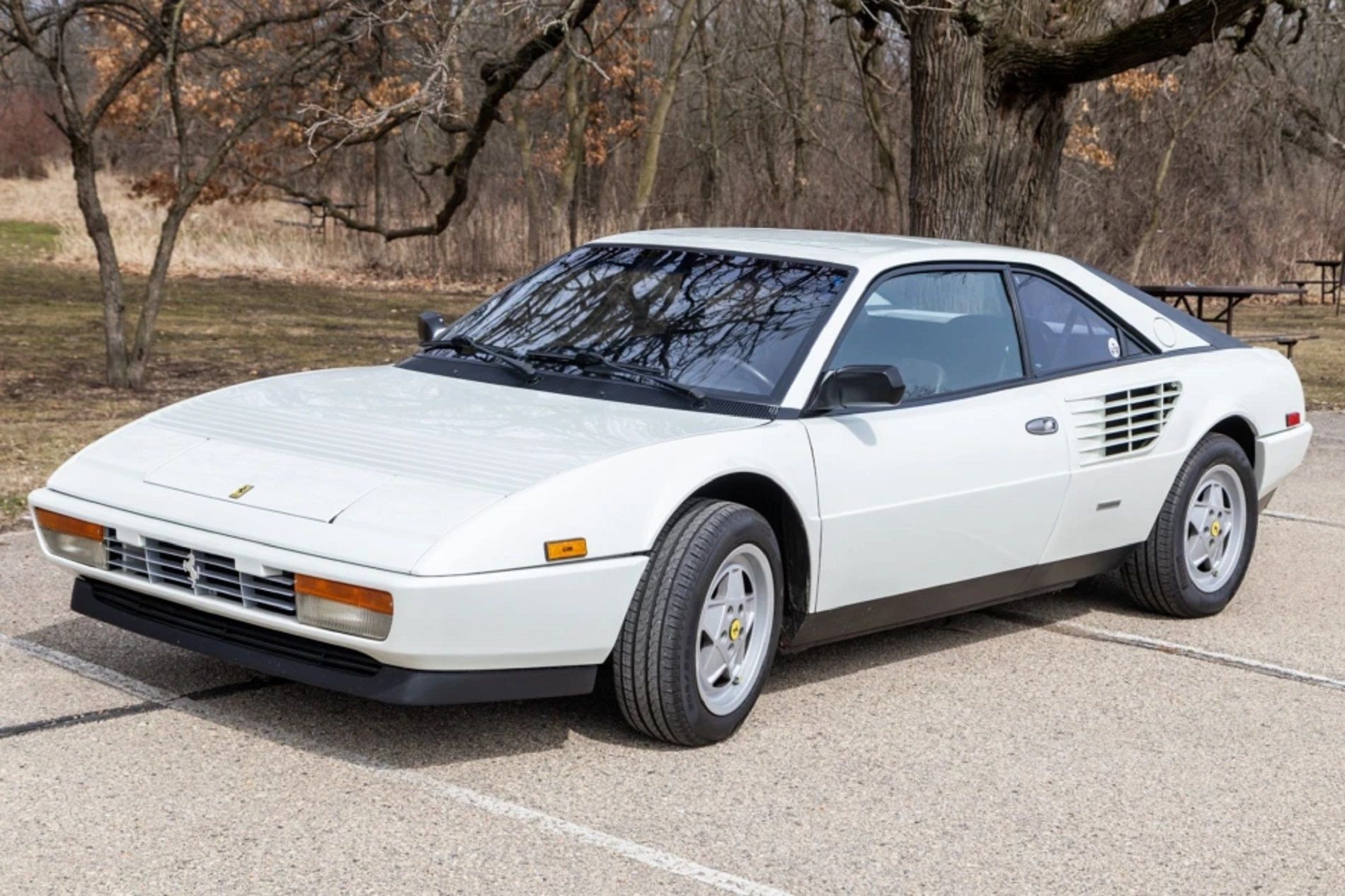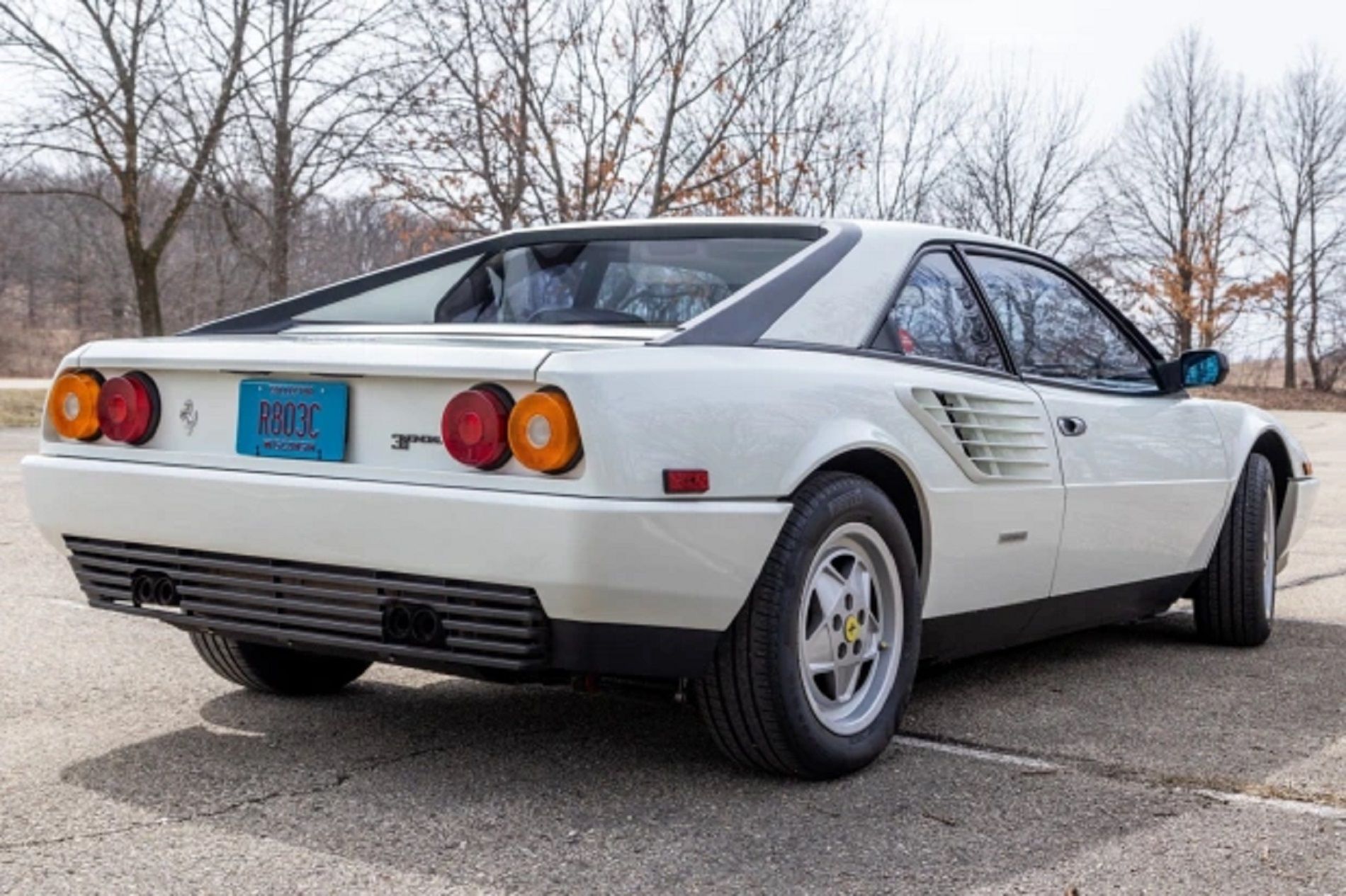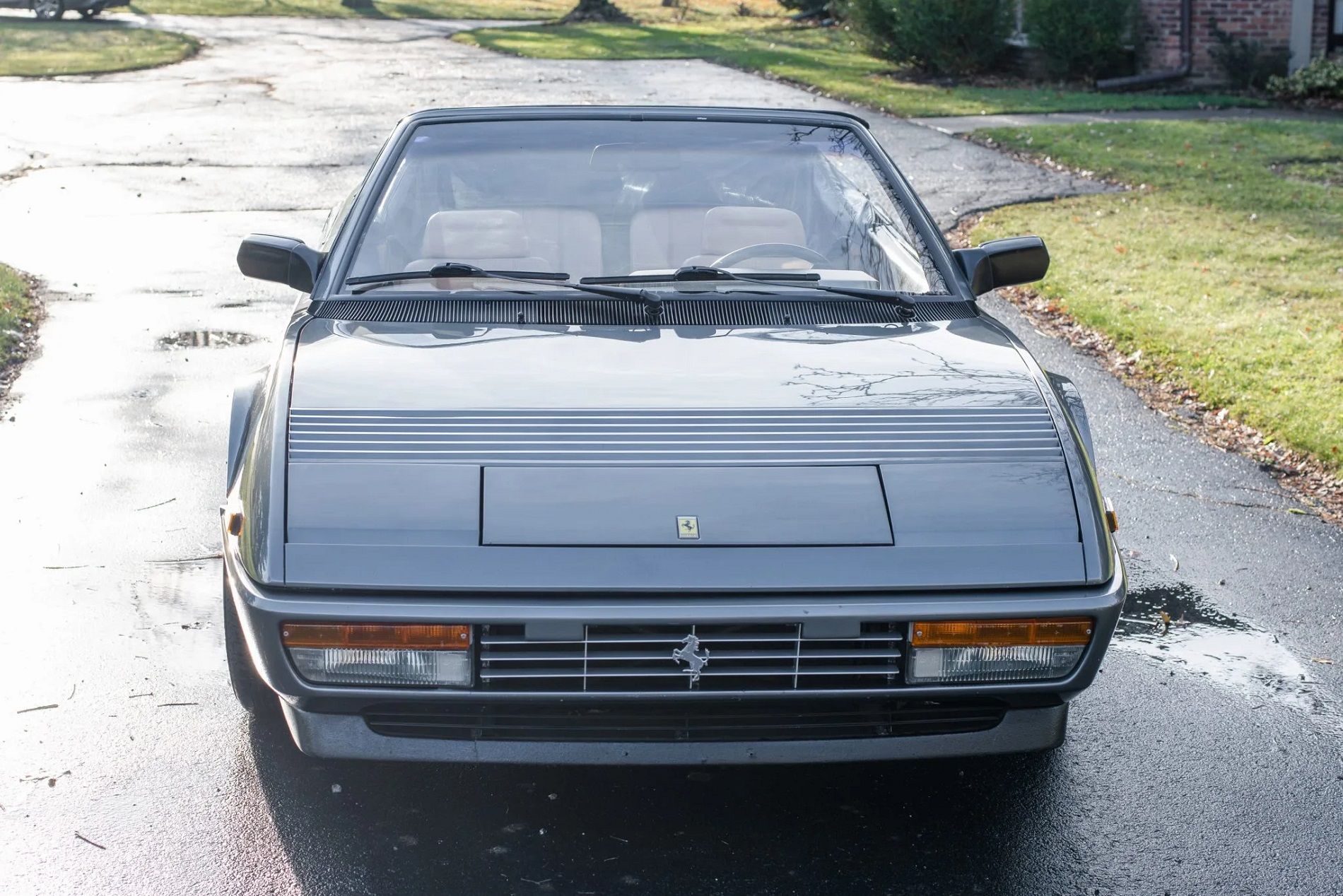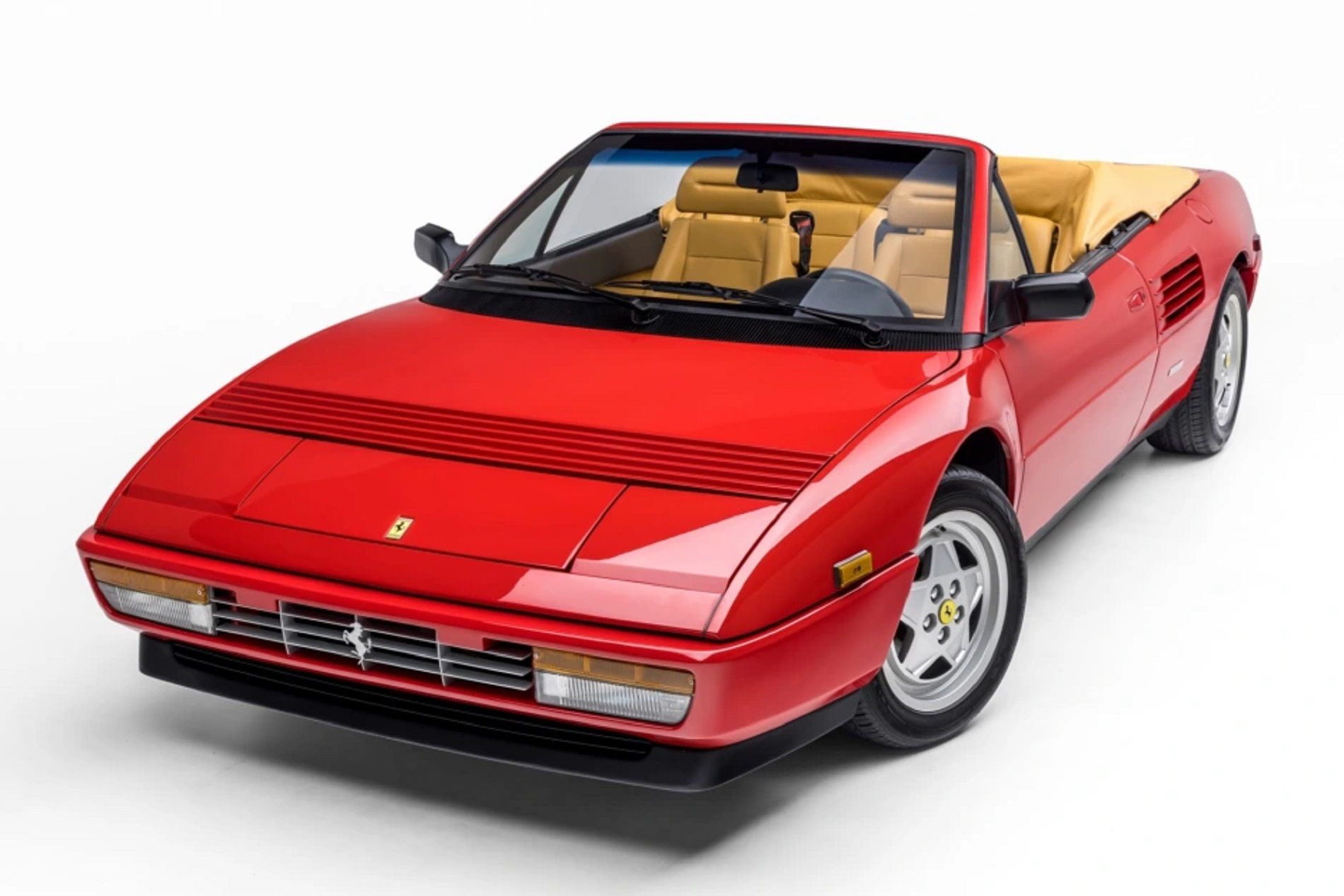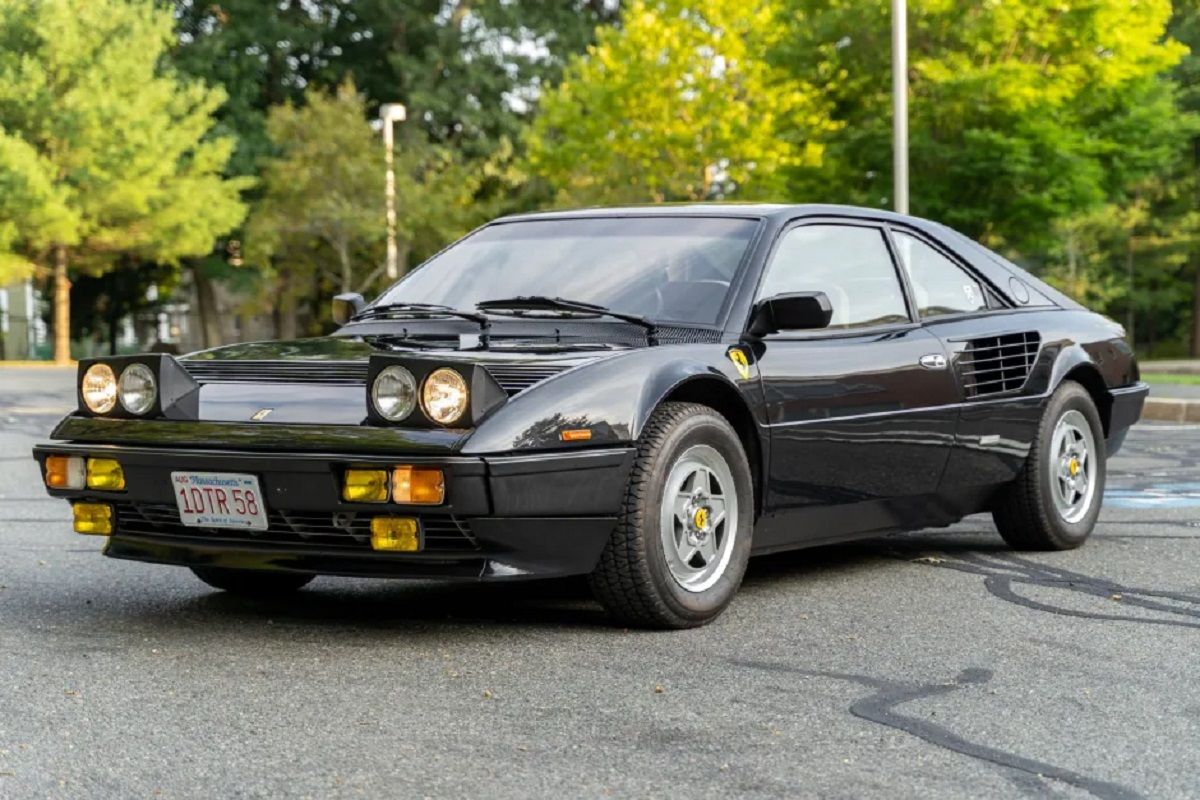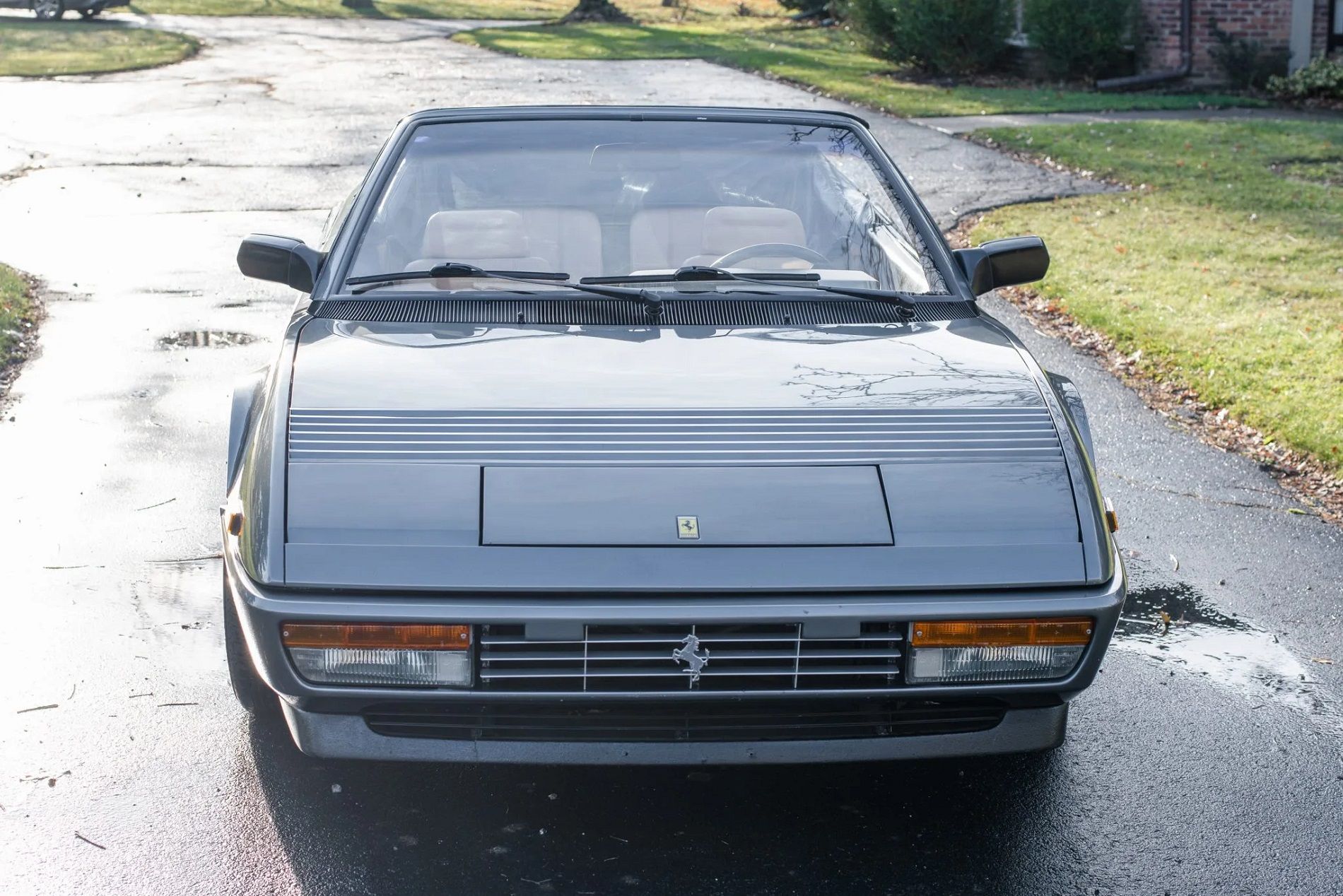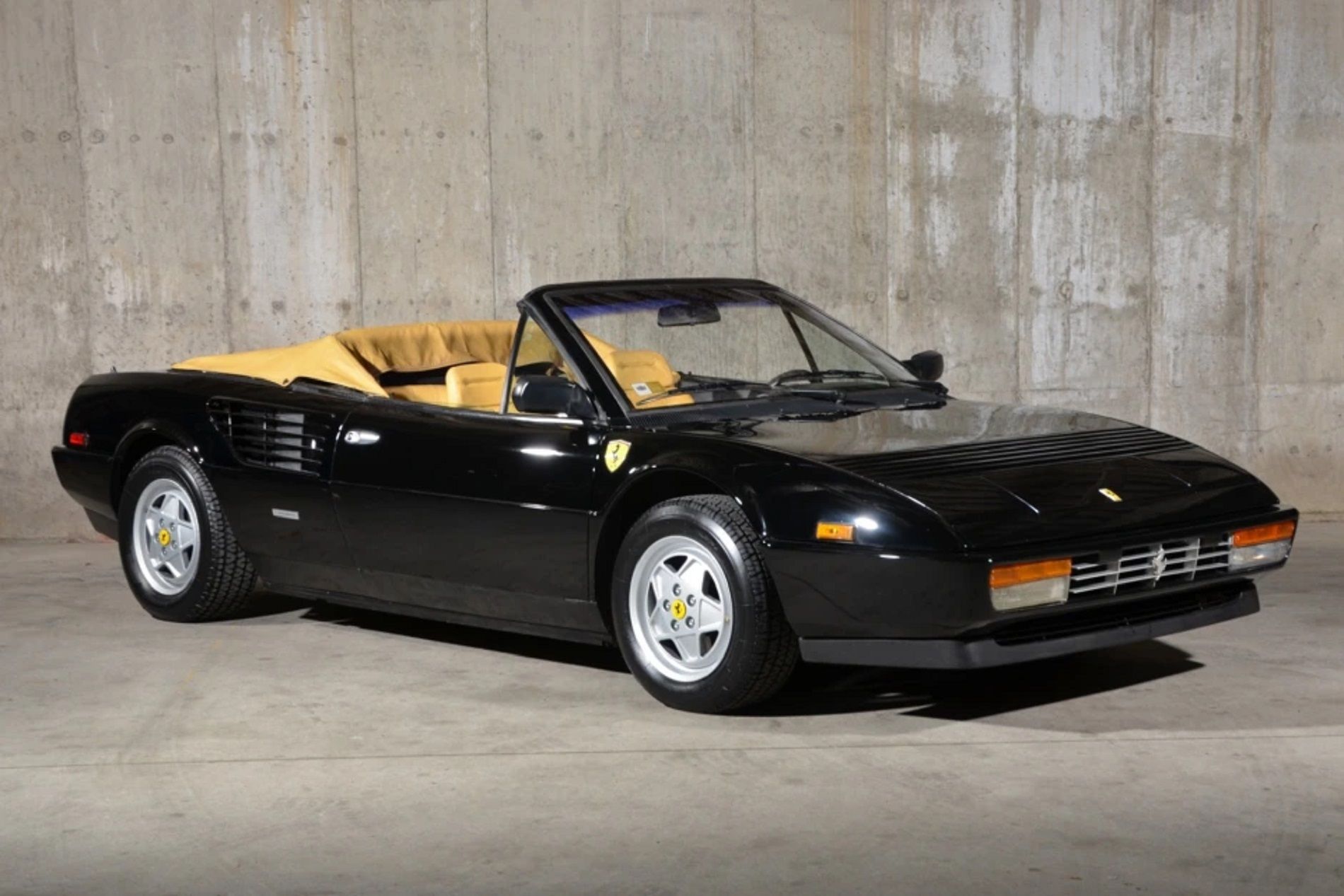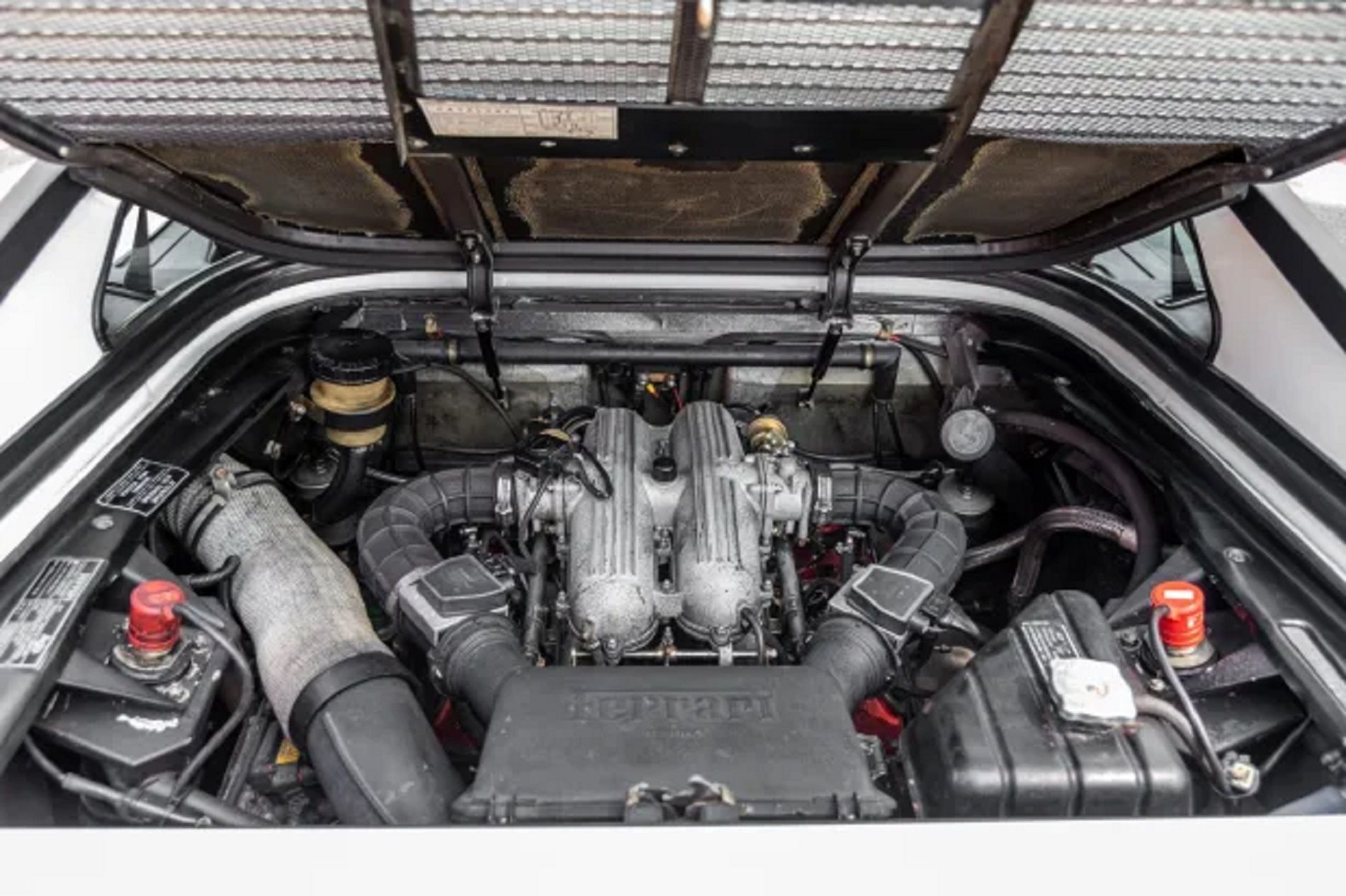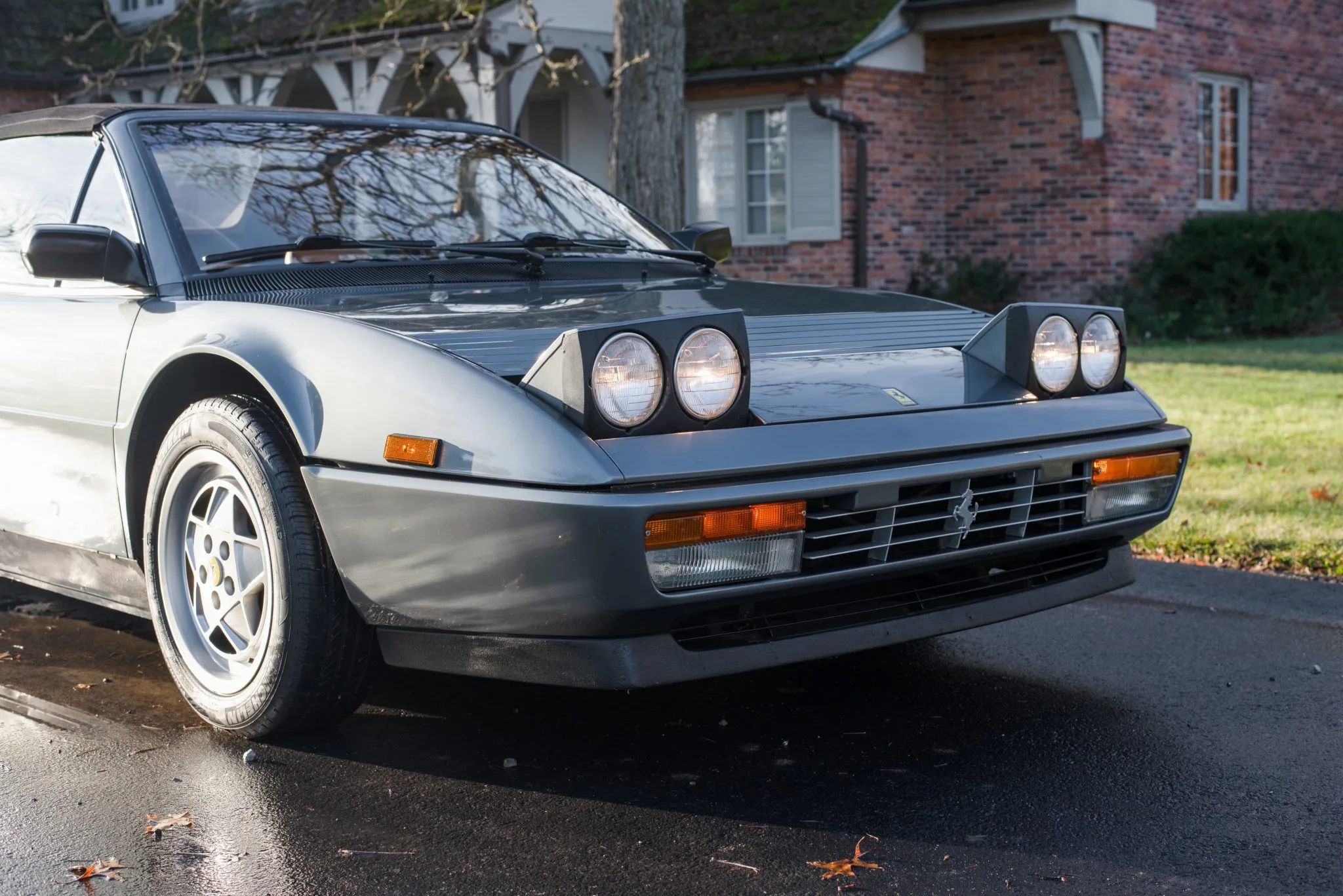The 1980s was not a favorable era for sports cars. There was a looming global fuel crisis, and governments and jurisdictions were placing tighter emissions regulations on the automotive industry. Ferrari, like most car manufacturers, bowed to this pressure, and this was one of the major reasons for the production of the Ferrari Mondial. The Mondial was Ferrari’s attempt at creating a practical daily-drivable sports car. It has four seats, and a rear mid-engine mounted V8.
Ferrari produced the Mondial at the start of the 80s, and it was discontinued in 1993. Ferrari made two variants – the coupe and the cabriolet. There were also four generations of the Mondial in its lifetime. The first was the Mondial 8, which was produced between 1980 and 1982. This was the only Mondial that did not have a cabriolet variant. The next generation was the Mondial Quattrovalvole which was made until 1985. It produced more power because of the upgraded Quattrovalvole engine. The Mondial 3.2 followed in 1988 and the Mondial t capped off the Mondial lineup from 1988 to 1993. Here are 10 things you should know about ‘the poor man’s Ferrari.’
10 The Mondial 8 Gave The Mondial Lineup A Bad Reputation
In its lifetime, the Mondial received a bad reputation from car critics and Ferrari purists mainly because of the unimpressive first iteration, the Mondial 8. The Mondial 8 was a heavy car with subpar handling by Ferrari’s standards. It could barely manage a top speed of 142 miles per hour which was slower than its predecessor, the 308 GT4, which managed a top speed of 155 miles per hour. Ferrari quickly fixed the concerns in the subsequent variations of the Mondial, but the damage had already been done. The negative reviews from the 80s have been consistently recycled by car critics and enthusiasts throughout the years, and they have been haunting the sports car’s legitimacy until today.
9 The Mondial Was One Of The Best-Selling Ferraris In The 80s
Despite the negative press that the Mondial received, it was still a successful sports car when it comes to sales for the Italian automaker. This is because it was marketed as a reliable daily-drivable sports car with four seats. This might have caused a rift between Ferrari and Ferrari purists, but regular car buyers who were attracted to the status of the Italian brand and the perceived practicality of the Mondial bought the sports car in droves. By the end of its 13-year production run, Ferrari had sold about 6,800 examples of the Mondial. This was about 3000 units more that the Ferrari GT4 it replaced.
8 The Mondial Was Designed By The Legendary Pininfarina
Pininfarina had a long-standing relationship with Ferrari and helped the Italian automaker design the most beautiful vehicles in automotive history. In fact, the Italian companies have enjoyed almost six decades of automotive excellence ending in 2012. This means that every Ferrari since the 50s, except the Dino 308 GT4, was designed by Pininfarina. Ferrari’s legacy of creating gorgeous cars is intertwined with Pininfarina, and that legacy and history is carried through to the Mondial. It was not the best-looking Ferrari according to critics in the 80s and 90s, but the Mondial is now steadily increasing its cult following, and a lot more sports car enthusiasts are beginning to see the value of Ferrari’s attempt at creating a practical sports car.
7 The Mondial Is A Cheap Classic Ferrari
Back in the 80s when it debuted, the Mondial coupe had a starting price of around $90,000 dollars and the cabriolet started at about $110,000. The Mondial would cost between $300,000 and $450,000 if it debuted in 2023 when adjusted for inflation. But, the negative press and disdain from Ferrari purists considerably dented the value of the Mondial. Most Ferrari classics, especially those from the 80s and back, can fetch quite a premium price with pristine low-mileage examples like the Mondial predecessor, the 308 GT4, starting at $500,000. Classic Ferraris, especially those directly linked to their racing heritage, frequently sell for millions of dollars at auctions. Luckily for Ferrari enthusiasts who fancy owning a classic Ferrari, the Mondial should make an interesting bargain. Hemmings have great units that cost between $20,000 and $80,000.
6 The Mondial Is The Last 2+2 Rear Mid-engine Ferrari Ever Produced
To add to the vehicle’s desirability, the Mondial remains the last V8 Ferrari with four seats and a rear mid-mounted engine. The supercar is in exclusively rare company, with the GT4 being the only other Ferrari with four seats and a mid-rear mounted engine. The GT4 is a very popular classic Ferrari and the Dino 208 version increasing in value because of its desirability. About 3,600 GT4s were sold globally, making them a little rarer that the Mondial. But Ferrari made another four-seater version of the GT4. It had a front V12 engine, and it was marketed as a grand tourer. It was called the Ferrari 365 GT4 and was in production from 1972 until 1989. As far as thoroughbreds go, the Mondial remains the only true Ferrari with a rear mid-engine with four seats.
5 The Ferrari Mondial Is A Daily-drivable Sports Car
Ferraris are not necessarily known for their practicality. A typical Ferrari is a two-door, two-seat sports car with more power, torque, and top speed than any everyday regular car driver really needs. Ferraris are statement pieces and are designed for the super-wealthy. They are usually noisy, have limited luggage room, consume a lot of fuel, and can only carry two people, including the driver. Not to mention, they are very expensive to insure and maintain. But, with the Mondial, we can agree that in their own Italian way, Ferrari tried to make the sports car practical. Yes, the car was still expensive, and yes, it still made that glorious V8 noise that would make you intolerable with your neighbors but it had four seats. You could fit four people in the Mondial – two adults in the front and children in the rear. Subsequent iterations of the Mondial shared vehicle components with the Testarossa, and because Ferrari sold quite a number of both these vehicles, finding spare parts for the Mondial is relatively easy and at fair prices.
4 Ferrari Produced Four Engines For The Mondial
The engines were built for different variations of the Mondial. There was the three-liter V8 that was made for the Mondial 8. It was capable of producing a maximum of 214 horsepower and pushed the Mondial 8 from zero to 60 miles per hour in about eight seconds. The second iteration of the Mondial, the QV, was fitted with a three-liter V8 that produced 240 horsepower which made the Mondial QV have an estimated zero to 60 time of just above six seconds. The third engine was fitted in the Mondial 3.2. It was a 3.2 liter V8 that produced a total of 270 horsepower. The Mondial 3.2 had a zero to sixty time of 6.3 seconds. The final engine was fitted in the Mondial T. It was a 3.4 liter V8 that produce 300 horsepower enabling the Mondial T to move from a standstill to 60 miles per hour in 5.6 seconds.
3 The Mondial Nameplate Is Synonymous With Racing
The first Mondials were race cars that participated in various events in the 50s. In 1951, Ferrari driver Alberto Ascari won the Driver’s Championship by finishing first, six out of eight times in the Formula 2 World Championships. The 2.0 and 2.5-liter race cars were called the Type 500 but were later renamed to The Mondial 500 in tribute to the successful race season. There was a Series I Mondial that debuted in 1953 at the 12 Hours of Casablanca, finishing second. The Mondial 500 Series I also won the Ethiopian Grand Prix. The Series II had an illustrious competition record, including class wins at Caracas and Sebring. Besides racing, the name Mondial means global in French, and it signified Ferrari’s commitment to the new safety and carbon emission standards for its vehicles.
2 The Quattrovalvole Engine Upgrade Was A Game Changer For Ferrari
Ferrari upgraded the engine of the Mondial in the second iteration after the Mondial 8 received negative reviews for being uncharacteristically slower than a Ferrari should be. The Mondial 8 used the conventional two valves per cylinder, but Ferrari upgraded the engine by introducing four valves for every cylinder. The technology was reportedly borrowed from the engines of Formula 1 race cars of the 80s. The new engine upgraded the Mondial’s power from 214 horsepower to 240 horsepower. The Engine was also shared with the Ferrari 308 GTB. The third and final iteration of the Mondial also used the four valves per cylinder V8 engine, but Ferrari tweaked it to produce even more power.
1 The Mondial T was the Most Powerful and Best Handling Mondial
Ferrari had tweaked and tinkled with the V8 engine enabling it to produce 300 horsepower and 239 pound-feet of torque by the time it was fitted in the Mondial T. The Mondial T has a zero to sixty miles per hour time of 5.6 seconds which was 2.6 seconds faster than the debut model, the Mondial 8. The ‘t’ in the name represented the layout of the transmission and the engine. The engine was mounted longitudinally while the gearbox was transverse, thus forming a ‘t’ shape. This layout meant that the engine could be mounted lower in the chassis. This, in turn, lowered the center of gravity for the vehicle and, therefore, considerably improved the handling.

